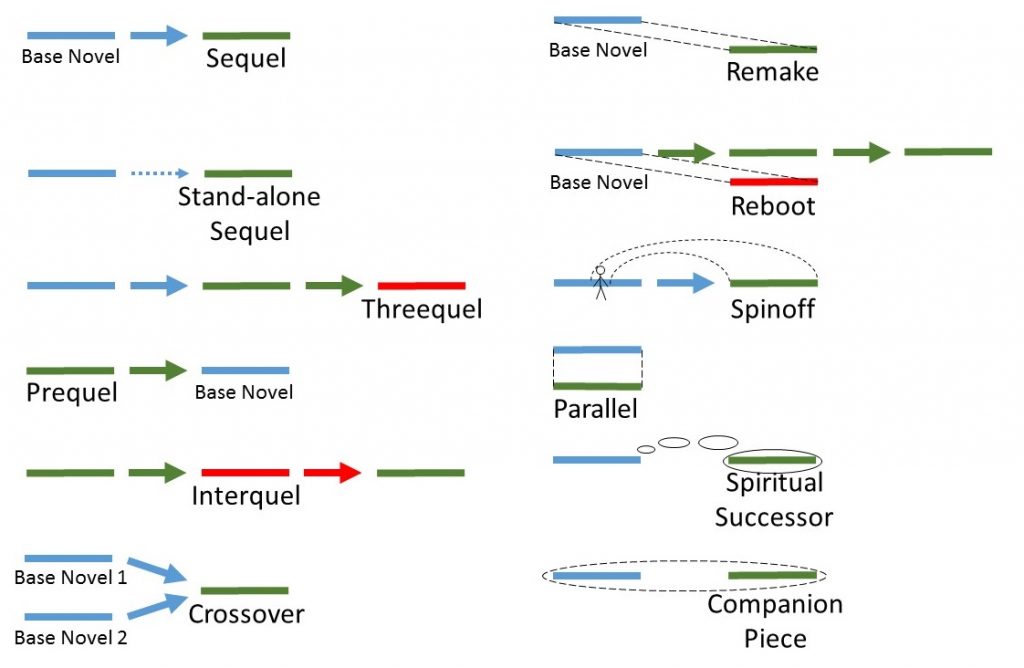The reading public raved about your book. Readers loved the characters, the setting, everything, and they’re asking for more. More? Yes, more novels with those characters in that world you created.
What can you do? You could start a series, and I have a dozen suggestions on how to do that.
This ‘problem’ happened to Homer in ancient Greece. The Iliad was popular, and fans demanded more. So he wrote the Odyssey, very likely the first sequel in history.
But straight sequels aren’t the only type of combination novels you could write. There are many more, and I’ll define each one. I’ll use the term ‘base novel’ to mean the one you wrote first, the one fans loved so much. I’ve included an illustration that attempts to depict these types graphically.
- Sequel. This picks up where the base novel left off. It has most of the same characters and takes place in the same fictional world as the base novel.
- Stand-Alone sequel. This is like a sequel, but is so self-contained that readers need not have read the base novel.
- Threequel. This takes place after the sequel. It’s also called a second sequel.
- Prequel. This takes place at a time before the base novel, and establishes the base novel’s backstory. For readers who already read the base novel, there won’t be a surprise ending, so it can be challenging to keep prequels interesting.
- Interquel. This is set in a time between two already existing works of your series.
- Crossover. This is a sequel to two different base novels that weren’t previously part of the same series. Say you have a compelling character in Base Novel 1 and an equally compelling character in Base Novel 2. You could write a Crossover novel in which they meet and interact.
- Remake. This is where you write a new version of the base novel. You take the same concept but redo it, abandoning any connections to it, or continuity with it. It’s more common in the movie industry.
- Reboot. This is like a Remake, but you’re redoing the base novel of an existing series. Again, it’s more common for movies.
- Spinoff. This is when a secondary character stole the show in your base novel, so you write another novel featuring that character. It can take place at a time before, during, or after the base novel.
- Parallel. This is a novel that takes place at the same time as the base novel. It is set in the same world, but may involve different characters.
- Spiritual Successor. This doesn’t build on the base novel, but contains many of the themes, elements, and the style of the base novel. You write it in the same ‘spirit’ as the base novel. It’s also called a Spiritual Sequel.
- Companion Piece. This is associated with and complementary to your base novel. It needn’t take place in the same world, but it expands on ideas and themes of the base novel and you intend for your readers to think of it in the same context as the base novel.
You can write novels in any or all of those forms. There are so many ways to please your hungry fans. One problem can occur if your enthusiasm for the series wanes before the clamoring from your readers dies down. Let’s call that the Misery problem, and we’ll leave that for a future blog post by—
Poseidon’s Scribe
